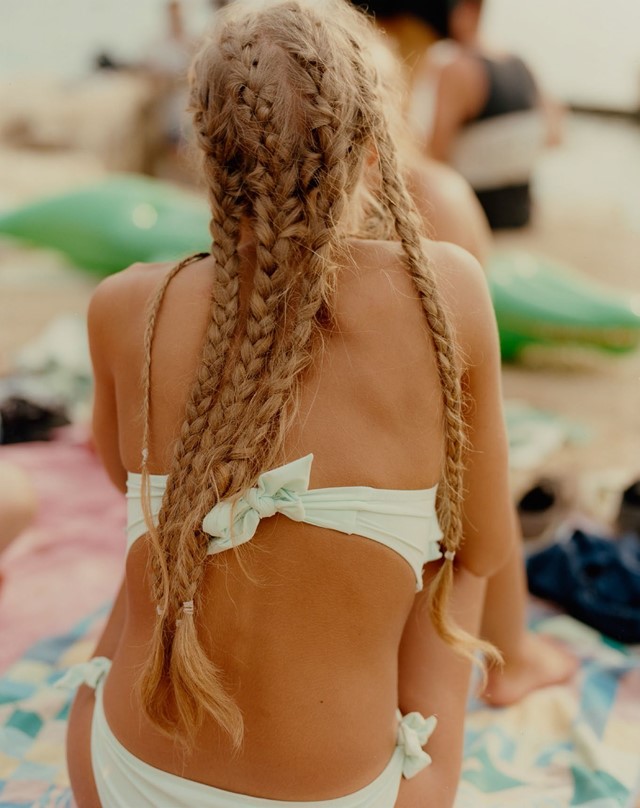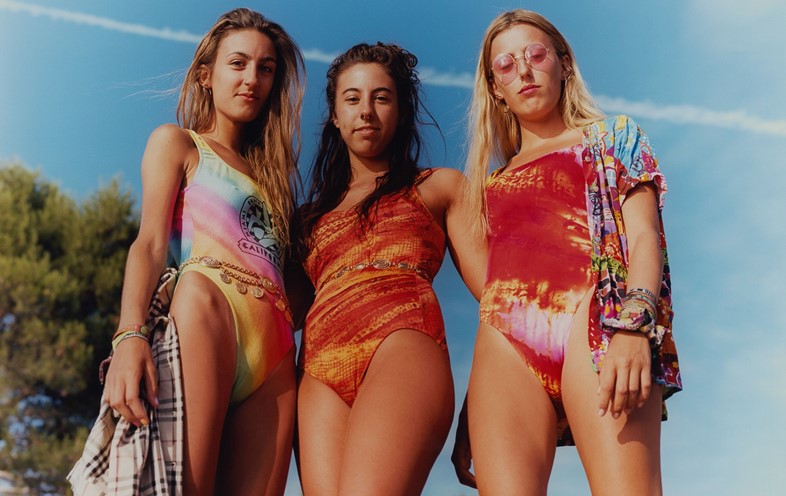AnOther speaks to photographer Samuel Bradley about the highs and lows of spending a week photographing Outlook Festival's hip-hop undercurrent for Brick magazine
If you’re not already familiar with it, Brick magazine, of which issue two is now sitting pretty on magazine shelves in bookshops and newsagents countrywide, you’re missing a trick. Conceived in order to take a fresh, unapologetically diverse and authentic view on hip-hop and its purveyors, it champions a defiantly punk DIY spirit, channelled through unique photographic commissions and sparky, in-depth interviews with some of the genre's brightest talents. This edition, that entailed sending photographer Samuel Bradley to Outlook festival on the tiny island of Stinjan in Croatia, to capture everyone and anything he came across.
“I was super second-album-stressed about this issue,” confesses Hayley Louisa Brown, the magazine’s founder, editor-in-chief and a photographer in her own right, who admits in her editor’s letter that “the ball has been pushed along the floor more than it’s rolled”. All the same, and perhaps aptly for an issue whose underlying theme has become self-belief, it’s a magnificent feat. She first came up with the idea of running a story about the festival after speaking to one of its organisers about the line-up, which featured the likes of Big Narstie, Flatbush Zombies and Stormzy. “I felt like, doing a festival, we needed come at it in a way that was unexpected,” she continues, “and I thought Sam would be the best person to do it. I knew he’d do something really interesting and different with the surroundings and the artists.”

That he did. Over the course of eight days – “it was a really long job…” he concedes – Bradley shot both artists and musicians as they stepped down from the stage, and the sun-speckled, over-tired festival-goers on the beach the next day, with the odd snapshot of the post-apocalyptic festival grounds, or a pair of feet poking out the end of a tent, thrown in for good measure. The two threads intertwine to create a strangely realistic portrayal of the trials and tribulations of such a long party. “The days are so beautiful and the weather’s so fantastic, and it’s so relaxed,” Bradley says. “And then at night, you could be anywhere. You can’t tell that you’re in Croatia because it’s pitch black. I think I preferred the daytime because the night times were really stressful. That was when we were trying to get artists to come backstage for portraits and things like that.”
This, literally, is how many of the pivotal shots in his photo essay – which includes portraits of Big Narstie, as well as members of Jurassic 5 and BADBADNOTGOOD – came about, he says, in a a pioneering spirit similar to that which plus of a festival of this magnitude in the first place. “A lot of it was done on the ground. There was a lot of calling up hotels and trying to get in touch with managers. I had a copy of the first issue of Brick with me and luckily it’s a really beautiful magazine, so I kind of used that to persuade a lot of the artists. Some of it was literally done on the spot when they came off-stage – you sort of have to be like ‘here’s the magazine, what do you think?’ So that worked.”
Here, Bradley tells AnOther about some his best and strangest experiences, and about the weeks of hand-printing that accompanied his decision to go analogue.

On the surreal side of his experience…
"The surreal stuff was being at the hotel complex, as it’s a strange context to see all these British Grime artists in. It’s all white marble, a beautiful coastal hotel, you know, concierges in suits – and seeing anyone from Britain in that context is quite strange. I remember I was trying to get a photograph with Stormzy, and he wouldn’t come down out of his room to be photographed. But then I was sat in the lobby, and he came down to leave and go to the airport. I didn’t take a picture, it would have been intrusive, but he was sat in a really regal chair in the lobby of this Croatian hotel, in a tracksuit and Airmax on his iPhone. And, you know, now he’s massive and super famous. That contextual element of the festival was quite strange, because you don’t normally see artists where they’re staying."

On his best memory from the festival…
"It’s funny, you remember the bad stuff a lot more, I think it sticks in your head. On the last day – not the last day we were actually there, but the last night – we stayed up and watched the sunrise. There was this feeling of relief that it was over, and the music had stopped as well – it hadn’t stopped the entire time. There was literally no one there and we had these production passes, so we could go anywhere. We climbed to the top of this fort on the island and everyone had been kicked out and gone back to the campsite, there weren’t even artists or staff. So it was like having this incredible space to ourselves, but with all the evidence of the festival having been on – like all the rubbish everywhere – and then it was illuminated by this incredible sunrise at 6:30 in the morning. That was really poignant."

On making the decision to go analogue…
"This is the first story, or the first series that I did, since I made the decision to go completely analogue. I printed it in January when I came back from Christmas and since then everything I’ve shot has been photographed on film and hand-printed. I completely dropped even scanning negatives, which I’d always done. I hadn’t even been in the darkroom since university, so I hand printed all this and I spent weeks learning the craft again with the printers at Labyrinth. This was the first result. In a way that’s why all the colours are quite all over the place, because I was learning. There were a lot of mistakes involved in getting those results, so it’s quite significant to me."



Brick Magazine Issue #2 is out now.
